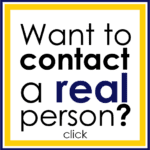The general sizing rule for a minimal quiet zone (QZ) is 10 times the width of the narrowest bar (aka the “X” dimension) in a barcode or 1/8th inch, whichever is greater. A common reason for barcodes to fail is because of inadequate quiet zones that confuse the barcodes with other print. If that margin isn’t big enough on both sides, the barcode may be unreadable. In this case, bigger is better and therefore extra space on both ends of the barcode is always preferred. So getting back to that #2 pencil…It is simple, easy and fascinating that all you need to do is place a pencil on either end of the bar code symbol. If you see white space on both sides of the pencil, then your barcode label has plenty of quiet zones, but be sure to check both ends (quiet zones) of the barcode symbol. Quiet zones for two-dimensional (2D) barcodes are calculated differently. The popular QR Code that is being used in marketing materials recommends a white space of 4 times the size of a module (that is the size of one of the black squares within the code) on all four sides of the code. For Datamatrix, a white space of at least the size of a single module should be used—again on all four sides.
If you are ever in a store and the checkout clerk is having trouble scanning your merchandise, you might want to take a quick look at the barcode to see if you spot a quiet zone problem. Aside from poor print quality, an insufficient quiet zone could well be the culprit and you would get the chance to demonstrate your barcode expertise!






